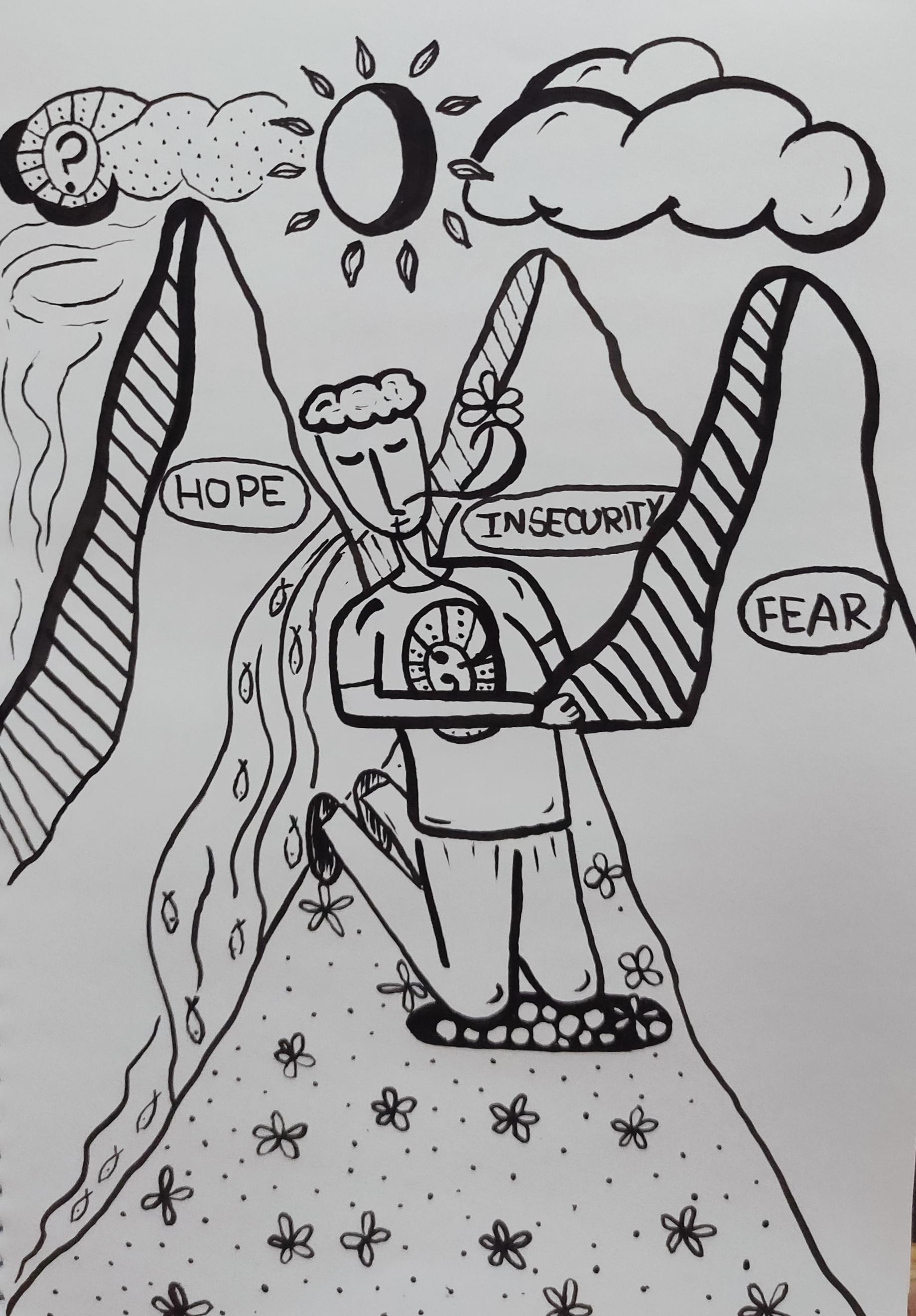Groundlessness

IMAGE OF THE WEEK
We are grateful to Rupali Bhuva for offering this hand-made painting for this reading.

Hope is what propels us into action. We’ve been taught to dream of a better world as the necessary first step in creating one. We create a clear vision for the future we want, then we set a strategy, make a plan, and get to work. We focus strategically on doing only those things that have a high probability of success. As long as we “keep hope alive” and work hard, our endeavors will create the world we want. How could we do our work if we had no hope that we’d succeed?
Motivated by hope, but then confronted by failure, we become depressed and demoralized. Life becomes meaningless; we despair of changing things for the better. At such a time, we learn the price of hope. Rather than inspiring and motivating us, hope has become a burden made heavy by its companion, fear of failing.
So we have to abandon hope, all of us, and learn how to find the place “beyond hope and fear.” Liberated from hope and fear, we are free to discover clarity and energy, but the journey there demands behaviors we’re not familiar with or have actively avoided. Here are a few markers of this journey, blessed wisdom gleaned from the experiences of those who have persevered and maintained steadfast focus even when their efforts have yielded little or no results.
Rudolf Bahro, a prominent German activist and iconoclast, describes the first step: “When the forms of an old culture are dying, the new culture is created by a few people who are not afraid to be insecure.” Bahro offers insecurity as a positive trait, especially necessary in times of disintegration. Yet is it conceivable to think that feeling insecure would increase our ability to stay in the work of creating something new?
I don’t know what Bahro meant by “insecure”; however, I’ve noted that those who endure, who have stamina for the long haul and become wiser in their actions over time, are those who are not attached to outcomes. They don’t seek security in plans or accomplishments. They exchange certainty for curiosity, fear for generosity. They plunge into the problem, treat their attempts as experiments, and learn as they go. This kind of insecurity is energizing; people become engaged in figuring out what works instead of needing to be right or worrying about how to avoid failure. Whenever they discover something that does work, there’s a huge rush of energy, often accompanied by laughter.
A willingness to feel insecure, then, is the first step on the journey beyond hope and fear. It leads to the far more challenging state: groundlessness. A knowing that nothing ever remains the same, learning to live with the unrelenting constant of change, realizing that even the good things won’t last forever, accepting that change is just the way it is.
Excerpted from this article.
SEED QUESTIONS FOR REFLECTION: What does groundlessness mean to you? Can you share a personal story of a time you exchanged 'certainty for curiosity, fear for generosity'? What helps you accept the unrelenting constant of change?